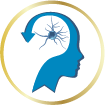Neuroeducation and Evidence-Based Learning is a rapidly growing field of study that is gaining more attention each day. Neuroeducation focuses on the study of the brain and how it works in order to help us better understand how we learn and how to use that knowledge to improve learning outcomes. Evidence-Based Learning (EBL) is an approach to learning that is based on evidence gathered from research and experience. Together, Neuroeducation and EBL provide powerful tools to help students learn more effectively and efficiently.
What is Neuroeducation?
Neuroeducation is a rapidly growing field of study that combines neuroscience and education. It is based on the idea that by understanding how the brain works, we can better understand how people learn and how to use that knowledge to improve learning outcomes. Neuroeducation focuses on the study of the brain and its relationship to learning, memory, and behavior. It looks at how different parts of the brain are connected and how they interact with each other. Neuroeducation also examines how different types of stimuli can affect the brain and how different learning strategies can be used to maximize learning.
What is Evidence-Based Learning?
Evidence-Based Learning (EBL) is an approach to learning that is based on evidence gathered from research and experience. It is based on the idea that by gathering data from research and applying it to the classroom, teachers can create more effective and efficient learning experiences for their students. EBL emphasizes the importance of using data and research to inform decisions about teaching and learning. This approach can be used to evaluate different instructional strategies and to determine which ones are most effective for a given population or learning goal.
How Can Neuroeducation and Evidence-Based Learning be Used Together?
Neuroeducation and Evidence-Based Learning can be used together to create more effective learning experiences for students. By understanding how the brain works and combining that knowledge with data from research, teachers can create more effective learning strategies that are tailored to the individual needs of their students. By using both Neuroeducation and Evidence-Based Learning, teachers can create more effective and efficient learning experiences for their students.
Conclusion
Neuroeducation and Evidence-Based Learning are two powerful tools that can be used to create more effective and efficient learning experiences for students. By understanding how the brain works and combining that knowledge with data from research, teachers can create more effective learning strategies that are tailored to the individual needs of their students. Neuroeducation and Evidence-Based Learning provide powerful tools to help students learn more effectively and efficiently.












Leave a comment